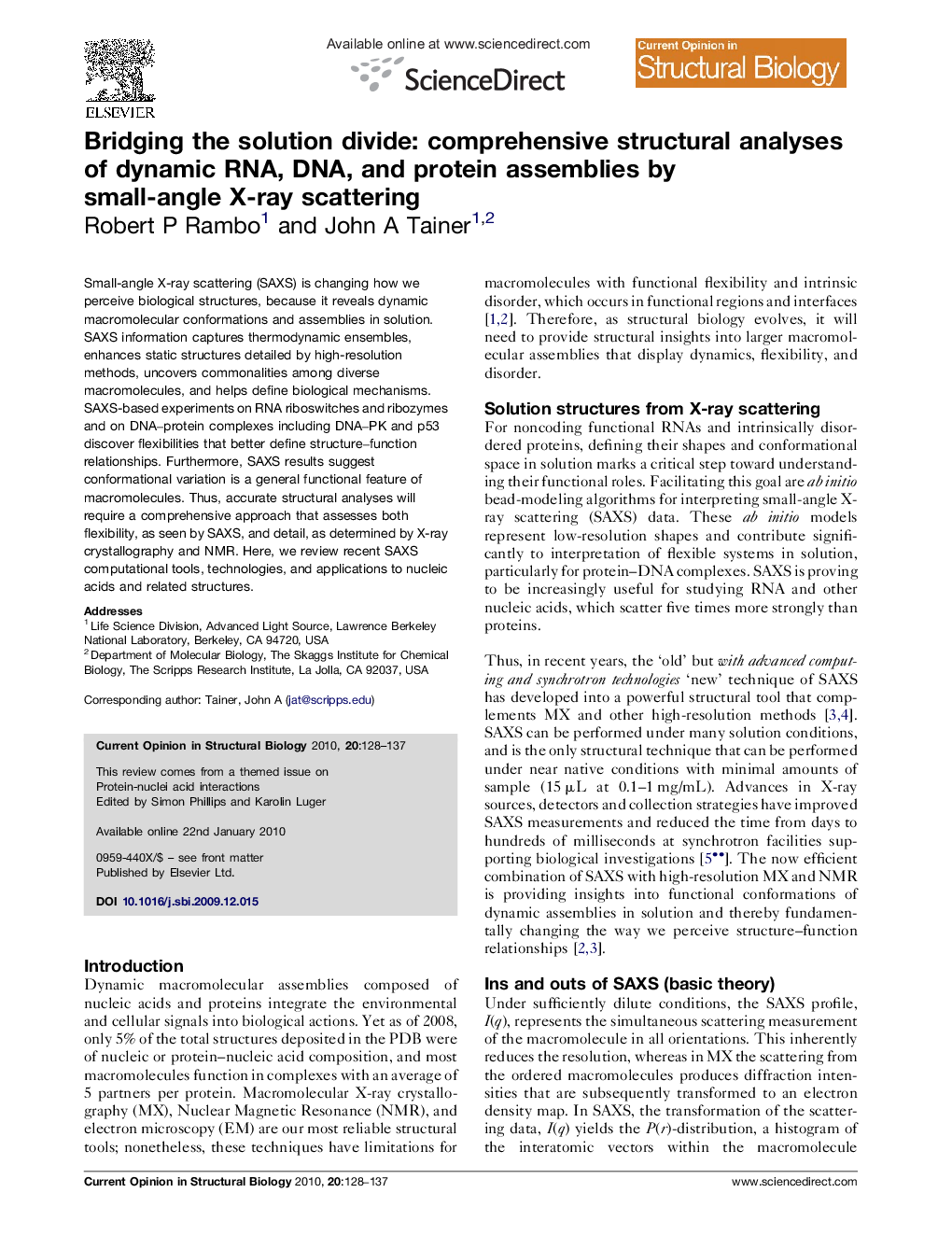| Article ID | Journal | Published Year | Pages | File Type |
|---|---|---|---|---|
| 1979494 | Current Opinion in Structural Biology | 2010 | 10 Pages |
Small-angle X-ray scattering (SAXS) is changing how we perceive biological structures, because it reveals dynamic macromolecular conformations and assemblies in solution. SAXS information captures thermodynamic ensembles, enhances static structures detailed by high-resolution methods, uncovers commonalities among diverse macromolecules, and helps define biological mechanisms. SAXS-based experiments on RNA riboswitches and ribozymes and on DNA–protein complexes including DNA–PK and p53 discover flexibilities that better define structure–function relationships. Furthermore, SAXS results suggest conformational variation is a general functional feature of macromolecules. Thus, accurate structural analyses will require a comprehensive approach that assesses both flexibility, as seen by SAXS, and detail, as determined by X-ray crystallography and NMR. Here, we review recent SAXS computational tools, technologies, and applications to nucleic acids and related structures.
